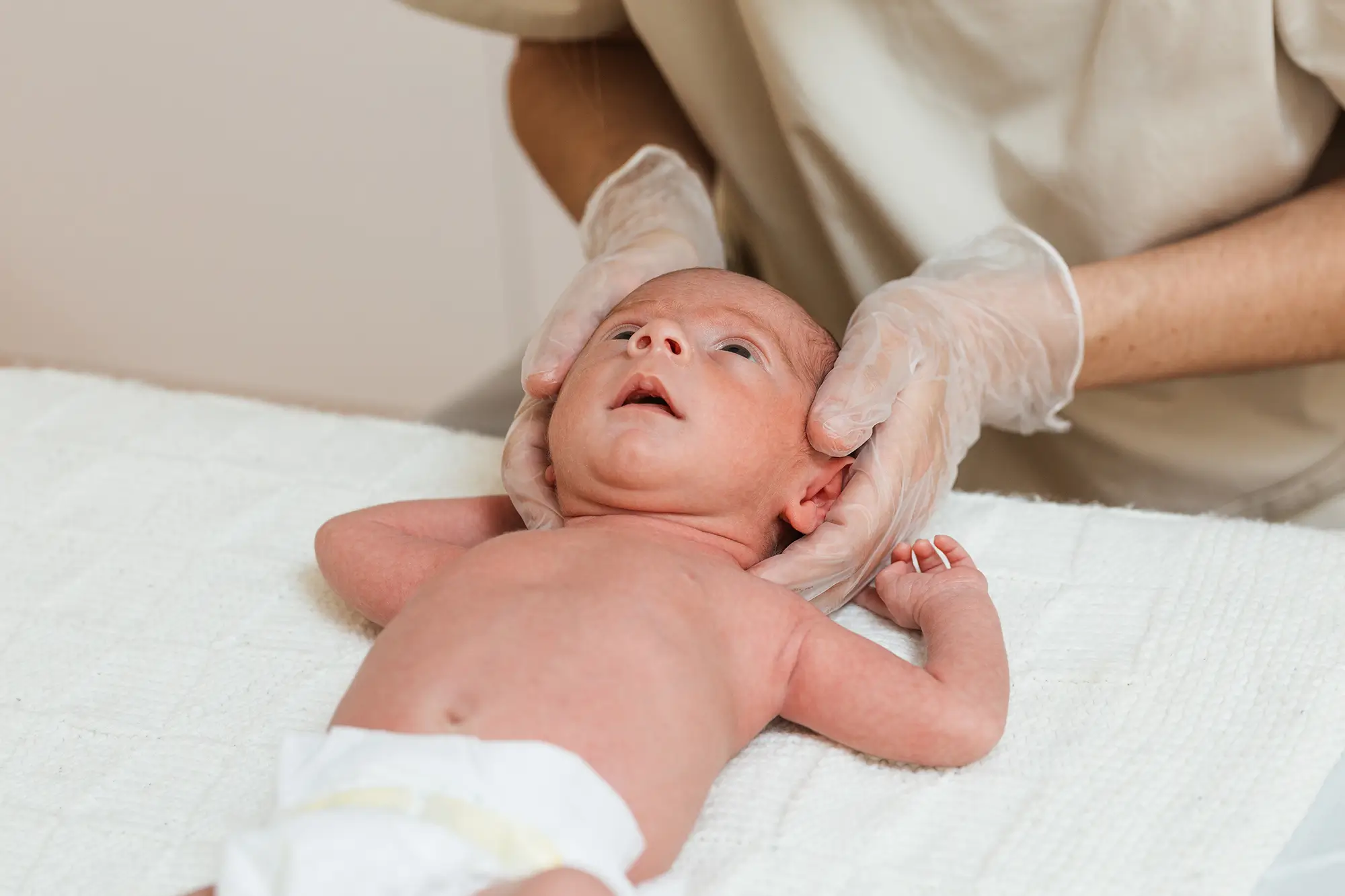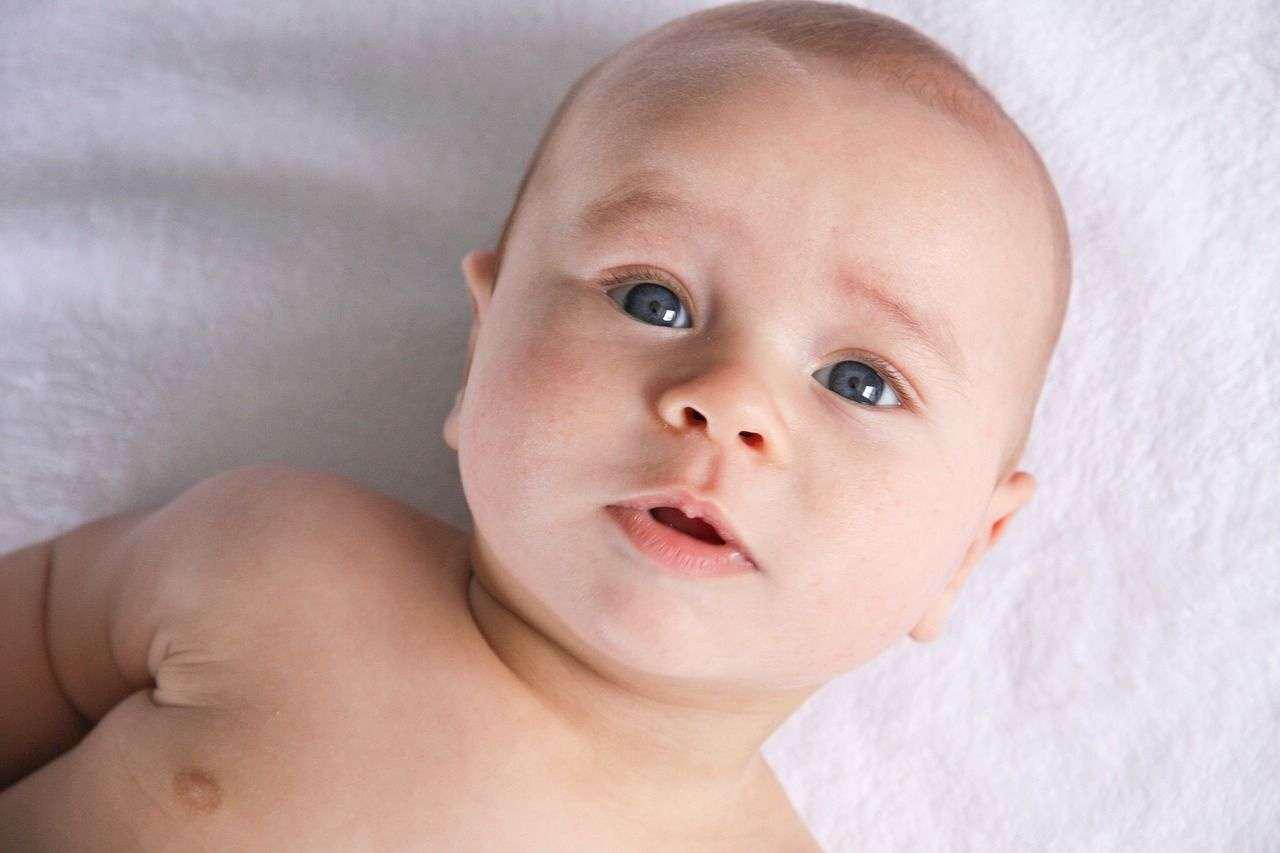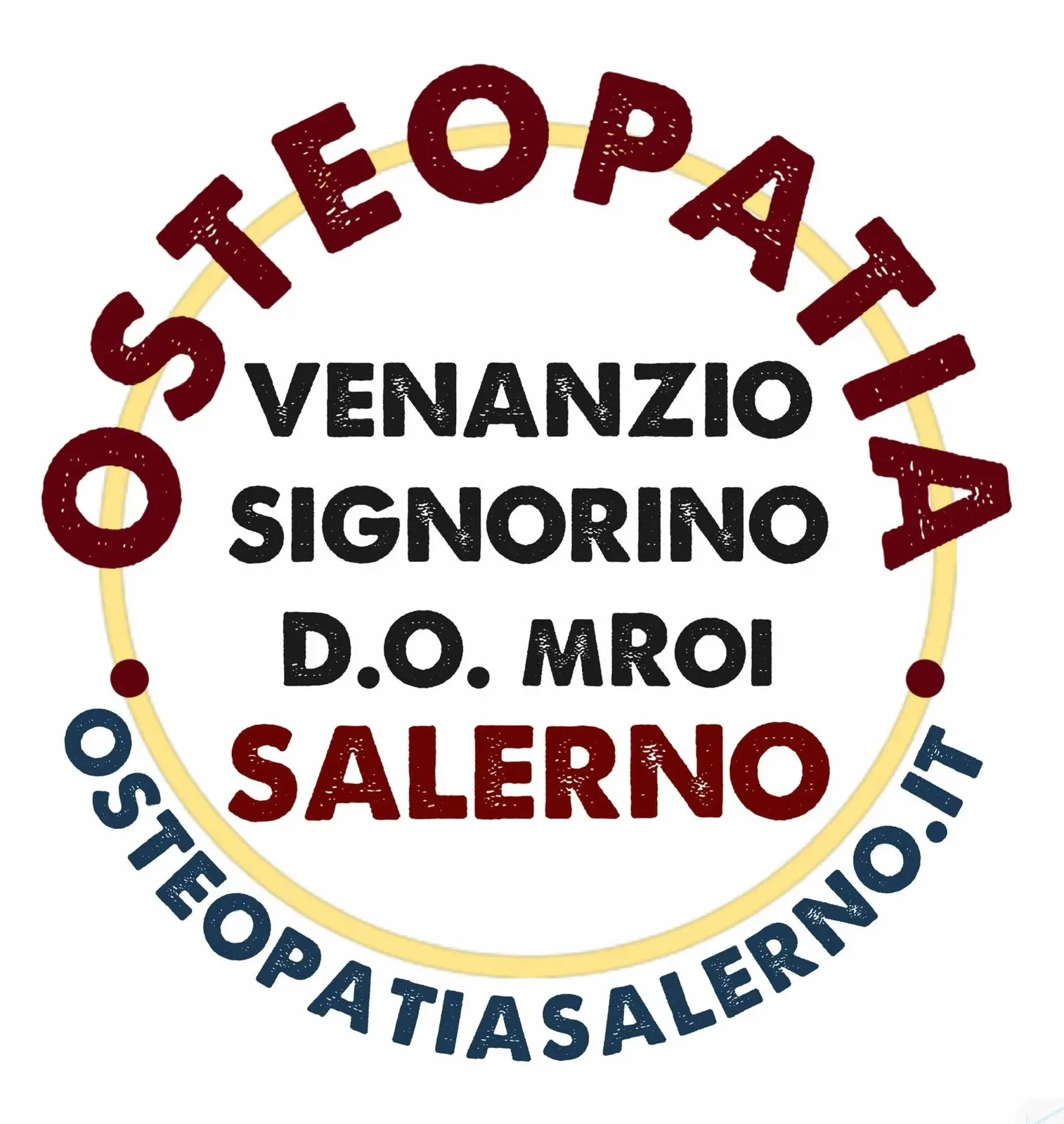

Osteopathy for infants focuses on addressing all the issues a baby may experience from the very first days after birth.
The treatment aims to promote the well-being of the newborn and child, offering benefits in preventing or treating various disorders.
Tissues have their own memory; everything leaves an imprint. For this reason, neonatal osteopathy is essential, as it helps prevent dysfunctions from becoming established.
Myogenic torticollis, usually present from birth, is one of the conditions treated with great success by an osteopath.
Postural myogenic torticollis manifests as an asymmetrical posture of the neck, caused by a congenital or acquired contracture of the Sternocleidomastoid muscle (SCM), a muscle that connects the mastoid region, behind the ear, to the clavicle and sternum.
This shortening can result in the characteristic posture of the baby, with the head tilted toward the affected shoulder and rotated toward the opposite side.
Congenital myogenic torticollis, a malformative condition originating in utero, must be distinguished from acquired postural torticollis, caused by fetal malposition in the womb or after birth. In this case, although the muscle may appear shortened, there is no fibrous alteration of the muscular structures, and it resolves quickly with appropriate treatment.
Based on the etiology, torticollis can be classified as:
Congenital, of cranial or muscular origin. Muscular torticollis can, in turn, be divided into:
Acquired. This can have various origins, including:
Postural torticollis in infants could also be caused by muscular trauma during birth, leading to the formation of a hematoma within the muscle fibers. This results in a clinical situation with symptoms similar to the congenital form, but with a much more favorable prognosis.
Differential diagnosis between the types of torticollis is made through clinical evaluation during a physical examination and sometimes may involve instrumental tests.
Myogenic torticollis in newborns is a common yet often underestimated neonatal issue. If not resolved, the consequences can range from problems with sucking and breastfeeding to postural development asymmetries and positional plagiocephaly.
When the head is mostly rotated to one side, the baby’s head tends to flatten on the side where it rests, causing positional deformation of the skull.
The osteopath treats myogenic torticollis with precise and gentle manual techniques, aiming to facilitate the normalization process, improving mobility and correcting improper posture, thus preventing further complications.
The earlier the osteopath intervenes, the more effective and successful the therapeutic outcome will be.

Venanzio Signorino D.O.
Corso Vittorio Emanuele, 203
Salerno (SA) – 84122
P.I. 04598220657
Tel: +39 328 00 44 190
e-mail:
info@osteopatiasalerno.it